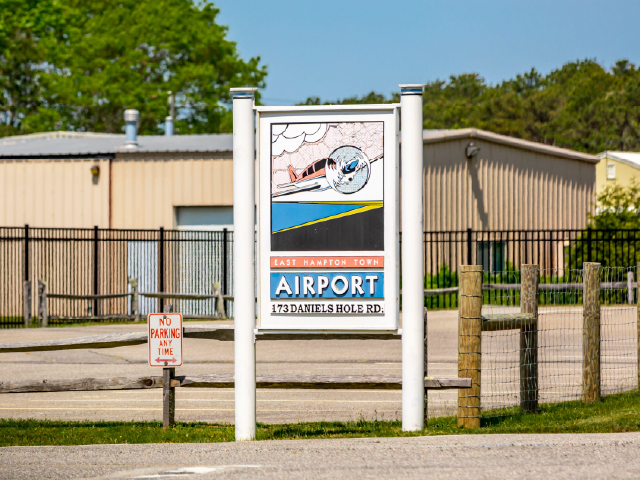FAA Warns of Turbulence in East Hampton Airport Plan

The Federal Aviation Administration warned Wednesday that a plan to convert East Hampton Airport to private use may take about two years — significantly longer than the three-day timeframe town officials recently estimated.
The FAA detailed its concerns with the plan in a three-page letter to East Hampton Town Supervisor Peter Van Scoyoc, who has led the town board’s efforts to change the airport’s status so that it can enact curfews and regulate the types of aircraft that take off and land there. The town posted the letter on its website.
“Once the airport is deactivated, it could not immediately return to its prior operating status,” Marie Kennington-Gardiner, the FAA’s regional administrator, wrote in the letter. “While FAA will endeavor to expedite its processes, you should be aware that it may take approximately two (2) years to restore the current capability to the airport if it is deactivated, depending on any potential environmental analyses.”
The town board had unanimously approved on January 20 a measure to deactivate the airport on February 28 and then reopen it on March 4 as a private-use airport using what’s known as a prior permission required (PPR) framework, meaning the town will have greater control over aircraft using the facility as well as arrival and departure times. The regulations could include limiting or banning certain types of aircraft such as jets, helicopters or seaplanes, with rules adjusted on an as-needed basis, town officials have said.
Van Scoyoc had said the move was aimed at addressing neighbors’ noise complaints and environmentalists’ pollution concerns. Business leaders have warned that closure could negatively impact the local economy. Van Scoyoc responded to the letter during the town board meeting on Thursday.
“To the extent that the airport is not authorized to open or any of its capabilities not approved, that is a direct result of the FAA turning its back on the town and deciding at the 11th hour that it cannot accomplish what it previously told the town was possible,” he said. “The town remains confident that a private-use airport will open on March 4. It is within the FAA’s hands whether the airport will be controlled or the FAA will be able to cater to instrument flights. We see no reason why this can’t be achieved and have no plans to change course.”
The town supervisor also said the FAA suggested in its letter that East Hampton Airport is currently unsafe — a characterization that multiple speakers at the meeting argued was untrue. But some callers suggested that if the town reopens the airport without the instrument approach and control tower approvals in place, it would in fact create an unsafe condition.
Kennington-Gardiner wrote that in addition to the many regulatory hurdles involved in converting the airport’s status, the new rules could present safety concerns. It also warned that the New York Terminal Radar Approach Control (TRACON), a Westbury-based FAA facility that provides approach services for New York Metro area airports, will not be able to manage which aircraft have permission to land in the Wainscott airport.
“FAA is also concerned about the methods the airport will use to deny permission to land under PPR,” she wrote. “If inbound aircraft are sent around because they have been denied permission to land, it could cause an unsafe situation within New York TRACON airspace. The FAA needs details on how the airport will enforce the PPR to ensure the integrity of the National Air Traffic System.”
Van Scoyoc responded by saying that the town would manage flight permission after aircraft have landed.
Erin King-Sweeney, an aviation attorney who is executive director of the pro-airport East Hampton Community Alliance, previously warned that the process would take longer than three days.
“The process of opening an airport is important and complicated,” she said. ‘EHCA is reviewing the FAA correspondence and remains committed to working with the Town to develop workable solutions.”



